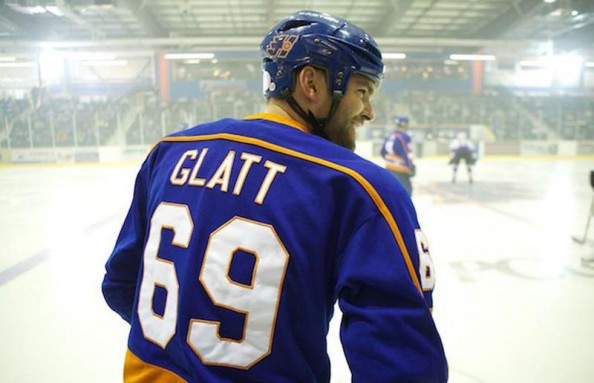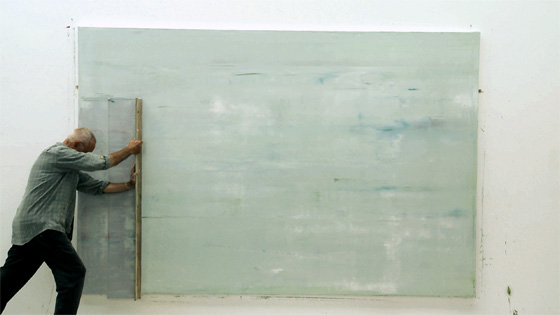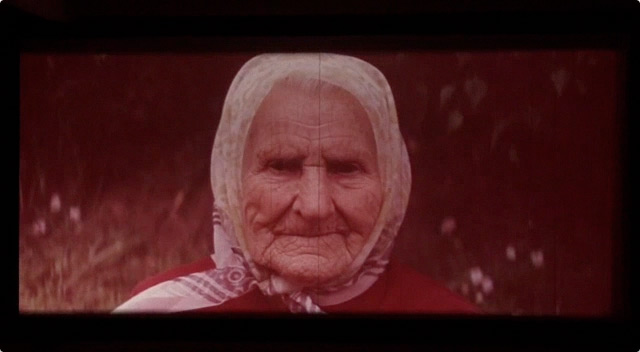Sunday, June 3, 2012
Vito Acconci Lecture
Tuesday, May 29, 2012
Cinemad podcast #9: Vanessa Renwick
Filmmaker Vanessa Renwick takes the term "do-it-yourself" seriously. She has made films since the early 1980s, and we mean made them: writing, filming, editing, and even processing the film by hand. 30 years and films and videos later, she has created portraits of people, life and landscapes, with great images and strong ideas, both fun and insightful. We talk about her movies and longtime hometown of Portland, but more about hitchhiking and wolves.
all podcasts are available here for streaming or download, and on iTunes for free under Cinemad.
Bookended by "I Was A Teenage Werewolf" by The Cramps
Vanessa's official website: www.odoka.org
DVD of her work coming soon:
www.kickstarter.com/projects/841274803/north-south-east-west-dvd-films-by-vanessa-renwick
Monday, May 21, 2012
The Gospel According to St. Matthew (1964) - Pier Paolo Pasolini
Sunday, May 20, 2012
Ai Weiwei: Sunflower seeds
Wednesday, May 16, 2012
W.M. Hunt presents "The Unseen Eye"
I was fortunate to have Mr. Hunt select 6 of my photographs for an exhibit at the Center for Photography at Woodstock in 2005.
Tuesday, May 15, 2012
TateShots: Tony Oursler
Monday, May 14, 2012
Expanded Cinema:Activating the Space of Reception
Works identified as Expanded Cinema often open up questions surrounding the spectator's construction of time/space relations, activating the spaces of cinema and narrative as well as other contexts of media reception. In doing so it offers an alternative and challenging perspective on filmmaking, visual arts practices and the narratives of social space, everyday life and cultural communication.
Derek Jarman "The last of England"
Friday, May 11, 2012
Pipilotti Rist on her working methods
Thursday, May 10, 2012
Susan Sontag and Agnès Varda Interview (1969)
No longer appropriate? via the Art Newspaper
No longer appropriate?: Artists who “appropriate” the work of others are increasingly coming into conflict as a slew of recent cases involving artists including Shepard Fairey, Ryan McGinley and Thierry Guetta (“Mr Brainwash”) demonstrates. Now, in the Court of Appeals for...
Wednesday, May 9, 2012
TateShots: Maurice Sendak
Monday, May 7, 2012
Christian Marclay -Telephones (1995)
Sunday, May 6, 2012
Tacita Dean Film at the Tate Modern 2011 negative cutting
Saturday, May 5, 2012
Peter Mays Oral History Excerpt
Links to Star Curtain Tantra below
Friday, May 4, 2012
Barbara Hammer on Maya Deren
Ms. Hammer traces the influence of Maya Deren to her own work.
Thursday, May 3, 2012
On Throwing a Film Festival - via LUX
"Personally I disagree with all attempts to ‘raise the level of public taste’. I think we have our work cut out satisfying the demand for entertainment at a high level that already exists. "
Margaret Tait
If Movies Didn’t Play Forward: Toni Dove, R. Luke Dubois Make Gestural Live Cinema
If Movies Didn’t Play Forward: Toni Dove, R. Luke Dubois Make Gestural Live Cinema:
What if film, rather than being projected from start to finish and proceeding in a straight line, could be reconstructed and performed? Every live visual performance involving video has more or less asked that question. But not every performance tries to convey a narrative in the process.
Wednesday, May 2, 2012
Tuesday, May 1, 2012
Jean-Marie Straub & Danièle Huillet: THE CHRONICLE OF ANNA MAGDALENA BACH
Video below
Straub/Huillet’s The Chronicle of Anna Magdalena Bach (1968) is surely one of the richest, most thought-provoking fiction-documentary hybrids in the history of cinema. The film documents by means of documents — notated scores, letters, engravings, drawings, maps — not all of them “authentic” (e.g. Anna’s diary, which forms the core of the voiceover narration). The documentary quality is enhanced by the way in which the filmmakers respect the wholeness and integrity of the musical performances by recording and filming them in their entirety, without cuts, a practice that defies industry norms in both cinema and music.
The result of these sustained, single-take musical performances by actual musicians — prime among them the recently deceased Dutch harpsichordist Gustav Leonhardt, who plays Bach — is the way in which our concentration becomes sharpened and focused on the smallest details of music-making: its labors, its gestures, its accidents.
Straub commented on this in a 1968 interview with Filmkritik magazine:
They say when people saw Le déjeuner de bébé or L’arroseur arrosé by Lumière, they didn’t cry out: Oh! bébé is moving, or l’arroseur is moving. They said, the leaves are moving in the trees. The bébé who moved they had already seen in the magic lantern. What was new for them was precisely that the leaves were moving. The “leaves” in the Bach film are the fingers and hands of the musicians and the unbelievable gestures of Leonhardt…
Pier Paolo Pasolini DOCUMENTARY
Monday, April 30, 2012
Sunday, April 29, 2012
William Klein: I had no real respect for good technique because I didn't know what it was
William Klein "Out Of Necessity" | Icontent | Douglas Sloan Director
William Klein Regis Dialogue with Paulina del Paso
Saturday, April 28, 2012
One Minute volume 6 - Call for entries
Deadline June 15th 2012
One Minute volume 6 - the sixth in the series of programmes of artists' moving image, curated by artist Kerry Baldry. which will be screened at GLIMMER 2012 - The 10th Hull International Short Film Festival in October. For more information on the previous touring programmes see http://kerrybaldry.com/#/one-minute/4540180591. Please email for further information: kerrybaldry1@yahoo.com
PRAXIS-3: 7 scenes by Dietmar Brehm
via LightCone.org
PRAXIS-3 7 scenes by Dietmar BREHM
2008 / Beta SP / coul / son / 22' 00
Friday, April 27, 2012
Considering FCPX, a year later via DocumentaryTech
Apple’s Final Cut Pro X was met with a lot of upset when it was launched announced a year ago (and launched in June 2011) at a price point significantly lower than previous Final Cut Pros, and with largely reconstituted features that resembled Apple’s amateur editing program so much it was mocked as “iMovie Pro.”
eBay pricing on sealed packages of Final Cut Pro 7 shot up, as a fine vintage would leap in value. Pro editors cursed Apple and tried to make sense of the new program. Apple responded by doing upgrades that slowly began to restore some features deleted from FCP7.
Now that the dust has settled, where do we stand?
Sack Barrow (exceprt) by Ben Rivers via Vimeo
Thursday, April 26, 2012
Amos Vogel, 1921-2012 via Movie Journal by jhoberman

A heroic cinephile and major figure in the creation of America’s post-World War II film culture, Amos Vogel died yesterday in his adopted hometown New York.
Wednesday, April 25, 2012
Paolo Gioli’s Filmarilyn
Tuesday, April 24, 2012
FILM: Twin Peeks Jean-Luc Godard and Stan Brakhage via Art Forum
Godard (extract)Histoire(s) du cinema
Stan Brakhage - The Dante Quartet
Monday, April 23, 2012
Sunday, April 22, 2012
One Minute Volume 5: Launch of Moving Image Review & Art Journal
One Minute Volume 5: Launch of Moving Image Review & Art Journal: The launch of the Moving Image Review & Art Journal takes place on Thursday 10th May at Chelsea College of Art and Design.
Saturday, April 21, 2012
Friday, April 20, 2012
Thursday, April 19, 2012
Kenneth Anger, Martin Scorsese, Todd Haynes, and Copyright via Columbia Univ Press Blog
Wednesday, April 18, 2012
MINIATURES by stephanie barber
Monday, April 16, 2012
Video: Tracking Debris from the Tohoku Tsunami
Sunday, April 15, 2012
Martha Rolser: Feature from Centro José Guerrero in Granada
The future of protest video via The Economist
“Ephemeral Evidence” Profiles: Rebecca Davis via CultureBot
In a Culturebot manifesto laying out the fundamental differences between visual art performance and contemporary performance, Andy Horwitz suggests that visual art performance is essentially predicated on object making (or the rejection thereof), while contemporary performance is based in time and the notion of creating experience. He argues that visual art performance is more often than not created in isolation, where concept and execution are easily separated (the artist’s intellect and the assistant’s labor), while the contemporary performance experience is most likely collaborative (lighting, sound, decors, music, digital media – each represented by their own designers).
Saturday, April 14, 2012
The Startlingly Beautiful Films of Nathaniel Dorsky via NYT
“I went out with a camera,” Mr. Dorsky said, in describing his entry into filmmaking, “and tried to discover things.”
Saw his work at both NYFF/Views 10 & 11. His book "Devotional Cinema" is worth a read. Wish it was on my Kindle!
Friday, April 13, 2012
Additional Person Overrates Werner Herzog via ArtFagCity

Werner Herzog's 'Hearsay of the Soul', installation view
Lewis Klahr's trinket dreamscape via Globe and Mail
 Globe and Mail | Lewis Klahr's trinket dreamscape Globe and Mail Klahr – who came into prominence in the late 1970s and '80s when found footage became the in-thing in experimental film circles – records each ambient sound in a room, accentuating the fact that it's coming from a TV or stereo. and more » |
podcast #7: Light Industry by Cinemad

Cinemad: Light Industry by Cinemad
also available on iTunes under Cinemad
Today's podcast is with the founders and film programmers of Light Industry, a microcinema in Brooklyn specializing in avant garde and unusual film. They are not only human databases of art film history, they know the hurdles of how to run a film festival and a screening space, putting on great shows.
A Simple Representation of What Is: Rudy Burckhardt
---
When criticism is no laughing matter
Thursday, April 12, 2012
Stanley Kubrick: Master of Contradictions

Who are the great American film directors? More to the point, who do we think are the great American film directors? Well, there’s Ford, of course, the Zeus of the American pantheon, by turns comic, epic, maudlin and humane. Then there’s Welles, the ill-fated genius, abused by producers but beloved of critics. Spielberg, even in his seventh decade, is still the boy wonder; Scorsese the mad scientist. Griffith is the wise forefather, deeply flawed but idolized nonetheless, while Hawks is ageless, just as sly and self-assured as he was at the time of “The Big Sleep” (1946).
Kubrick, however, beats them all.
Wednesday, April 11, 2012
Video Distribution and Meaning: Panel Discussion @ Momenta
Momenta has exhibited over 80 artists who make video since 1991, many of whom were virtually unknown at the time but who have gone on to very prominent careers (including Janet Biggs, Omer Fast, Rico Gatson, Laurel Nakadate, and Michael Smith, just to name a few).
The topic of our discussion: video distribution and its formal impact on meaning, the steady growth of video as a collectible item, and how the mode of distribution affects the perception of the work.
Watching the Internet: An Interview with Jose M. Alvarez-Monzoncillo (Part Two)
What aspects of the Long Tail theory do you find convincing as a means of explaining what kinds of content will thrive in a networked culture? What do you see as the limitations of this model?
I don't believe the Long Tail exists, neither socially nor economically. The Net has permitted the emergence of a certain unsatisfied demand, but it is very small. The physical barriers to analogue distribution are greater on the Net. Added to that, the most difficult barriers to break down are the social, cultural and psychological ones. For example, World Cinema in the United States: before it was not possible to see these films because they weren't distributed, but even with the Net, the viewing of them has not increased. This is spite of them being free in many cases (P2P or Megaloud).
Stanley Kubrick’s First Film: Day of the Fight
Canadian Blood on the Ice: Hockey on celluloid from Face Off to Goon
The Stanley Cup playoffs start tonight!
Monday, April 9, 2012
Richard Prince on the Whitney Biennial
"After lunch I went over to the Whitney. For some reason I wanted to see the biennial. I'm not sure why. Before checking it out I went up to the fifth floor. That's where they hang work that's in the permanent collection. I'm glad I did. There was a gorgeous late fifties Lee Krasner painting hanging in a room of it's own. After staring, I walked down to the fourth floor and it looked like people were exercising on a huge black rubber matt that took up the entire floor. There were maybe fifteen people following the commands of a woman who was talking into a microphone... telling the fifteen people what to do. I think the fifteen people following the commands were people who had walked off the street. They kind of just "joined in". I've heard this type of activity in the art world is called "relational aesthetics"... or something like that... It felt like I was interrupting the "relation". I quickly got out of there. I walked down to the third floor and in the back there was a room filled with an artist's junk. There seems to be a room filled with an aritst's junk in every biennial I've ever been to. I'm not sure why this artist's junk was there. I walked around the corner and there were fifty Dana Shultz paintings on the wall. At least I think they were Shultz's paintings. (I walked by pretty fast). I skipped the second floor and went down to the lobby. What happened to the bookstore? There was none. There were some catalogues thrown out on tables that looked "remaindered"... what was there looked like a bake sale. I walked out of the Whitney having spent less than twenty minutes... fifteen of those standing in front of the Krasner."
- Richard Prince on the Whitney Biennial
“Gerhard Richter Painting” Is Mostly Gerhard Richter Painting
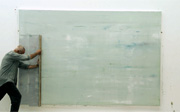
How do you make a documentary about abstract painting? When your subject strives for the indescribable, the normal tools of narration and interview become glaringly imperfect ..
On Liberation Cinema and Raymundo Gleyser
This is a documentary film about the life and work of Raymundo Gleyzer, Argentine filmmaker, kidnapped and murdered by that country’s military dictatorship in 1976.
Through Raymundo’s life, we follow the story of Latin American revolutionary cinema and the liberation struggles of the 60’s and 70’s. Raymundo was one of the major architects of the militant cinema, yet after his "disappearance" he fell into oblivion.
Daily Briefing. Pasolini's "Gospel" on Notebook | MUBI
Sunday, April 8, 2012
The Future of Online Art Sales: Q&A With Christie’s Live Director – artmarketblog.com
The Future of Online Art Sales: Q&A With Christie’s Live Director – artmarketblog.com

What are the characteristics of the main buyers of fine art online?
Our online bidders are an extremely diverse group, including everyone from longtime clients to beginning collectors to some of the trade’s most respected dealers. Many buyers choose online participation due to the convenience of the channel as well as anonymity associated with remote bidding alongside the excitement of the virtual saleroom .
500 WORDS: James Benning
Q&A: Film-maker Andrew Kötting
 The Arts Desk | theartsdesk Q&A: Film-maker Andrew Kötting The Arts Desk Archival voice recordings and self-consciously declamatory titles enigmatise the raw home-movie footage, which Kötting edited with the ghost of the experimental film-maker Stan Brakhage looking over his shoulder. Kötting has made more formal movies, ... and more » |
Saturday, April 7, 2012
Underground Film Festival Director Roundtable: What Is Underground?

After Bad Lit: The Journal of Underground Film published an editorial last week entitled “Do Underground Film Festivals Have to Screen Only Underground Films?, Bryan Wendorf, the Artistic Director of the Chicago Underground Film Festival, initiated a conversation on Facebook amongst a few of his fellow festival directors around the world.
Friday, April 6, 2012
Storytelling: The Film with the Tedious Plot
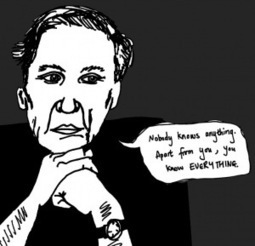
I don’t think the actual topic has anything to do with success or failure of a movie or TV show and everything to do with how the story is told.
Storytelling is the most important thing in a movie, and a proper story in Hollywood pays dividends. Good storytelling is basically what all books on writing will ever tell you – good characters you can connect with, drama and suspense, resolutions and so on. But I’m not just talking about the film itself, good storytelling also spreads to the world surrounding the film – the trailer and the audience. Hollywood knows this, but they have been resting on their laurels for a long time.
[Image credit: (c)Clare Young 2012]


